
Four Common Shibori Techniques Explained
The world of textile design encompasses a variety of skills and techniques which fall into two main categories. The first describes the actual construction of a fabric out of individual fiber and threads. In other words, interlacing yarn through weaving or knitting, or interlocking just fibers through a process such as felting. Secondly, textile design also refers to designing or embellishing onto the surface of a fabric. Often referred to as surface design, this includes such techniques as printing and embroidery. Shibori falls into this second category of surface design.
Shibori is a Japanese word whose root is shiboru, which means “to wring, squeeze, press.” It is a process of embellishing fabrics using resist techniques. Instead of building a design into the material through construction, as in knitting or weaving, the design is created on top of the finished fabric. In shibori, an artist or designer makes the design by creating a three-dimensional shape to the fabric through stitching, binding, folding or pole wrapping. In this new shape, the fabric goes into the dye bath and dye penetrates the exposed fabric. After that, the ties or binds are removed, revealing a pattern where the dye did not penetrate.
Different conditions influence the results of the finished design. The first condition is the technique creating the resist. A tied process will be very different than a folded. The second condition is the amount of pressure creating the resist. For example, a folded fabric held tightly in place with clamps will have more force than a folded fabric held together with a rubber band.
In the English language, we use the word shibori to describe fabrics made with the four major shibori techniques. Here are examples of each of those techniques.
Binding
For most people, the binding technique is the gateway to shibori. This is the technique in popular tie-dye shirts. It’s easy and fun to do. First, an artist picks up a bit of cloth and binds around it using thread or rubbers bands. These binds can be very small and packed tightly together, or long with layers of binding. The final result is generally circular motifs, although sometimes they can form a soft square.
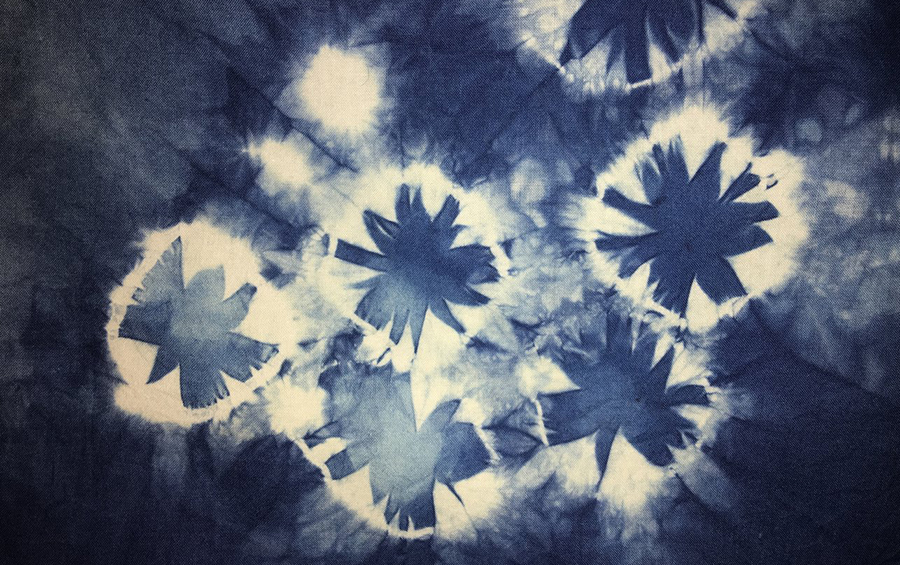
Stitching
Using stitches to form a resist offers almost limitless design possibilities. For this technique, artists create long, loose stitches or small, controlled ones to create lines of stitching. When stitching, sewers keep long tails on their threads. Once complete, the artist pulls the threads and knots them tightly to gather the fabric. These fabrics can be beautifully unique. No two sewers have an identical hand, and this technique allows for the hand of the maker to really shine.
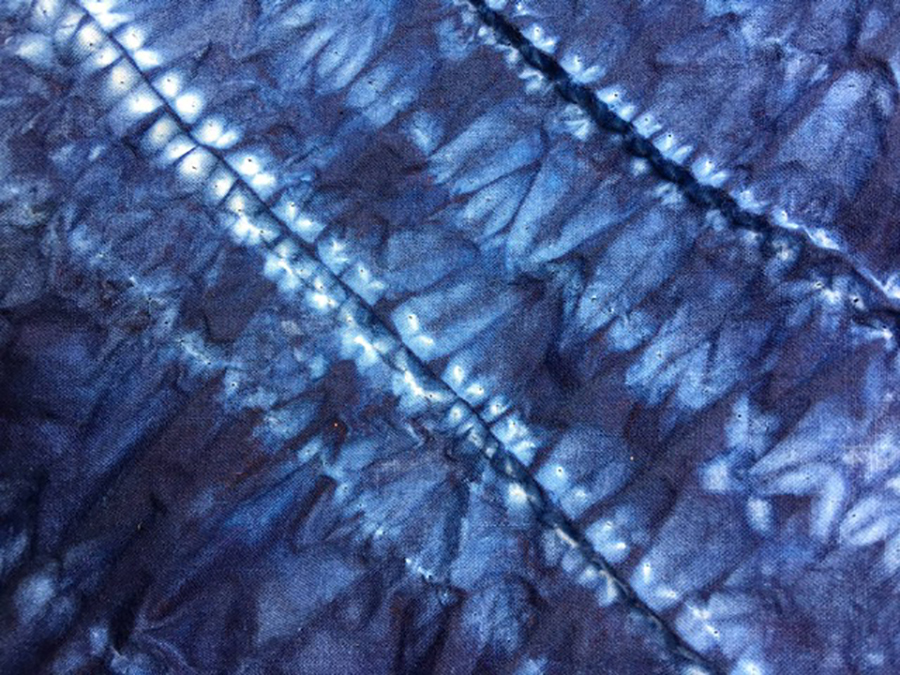
Folding
Folding fabric creates beautiful geometric patterns and can even add pleats and dimension. One direction often yields stripes seeming to radiate, while folding in more than one direction creates exciting shapes. In this technique, the pressure is crucial. Once folded, the fabric is held in place with something flat, such as a piece of wood. Wood is then held in place with clamps or tied. Choosing how to apply pressure is another design decision. Tying may add lines to the edges, while clamps keep the edges clean and crisp.
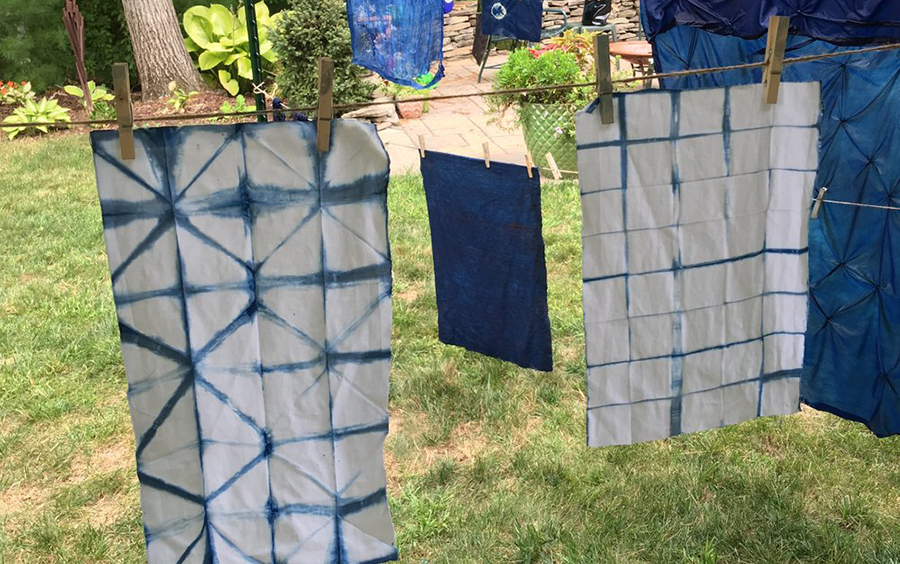
Pole Wrapping
Pole wrapping fabrics for resist dyeing is known as arashi, the Japanese word for storm. For this technique, an artist wraps cloth around a pole, compresses it down to form folds, and ties it tightly. From there, the whole pole goes into the vat. The Japanese thought the resulting diagonal stripes inspired memories of windy rain.
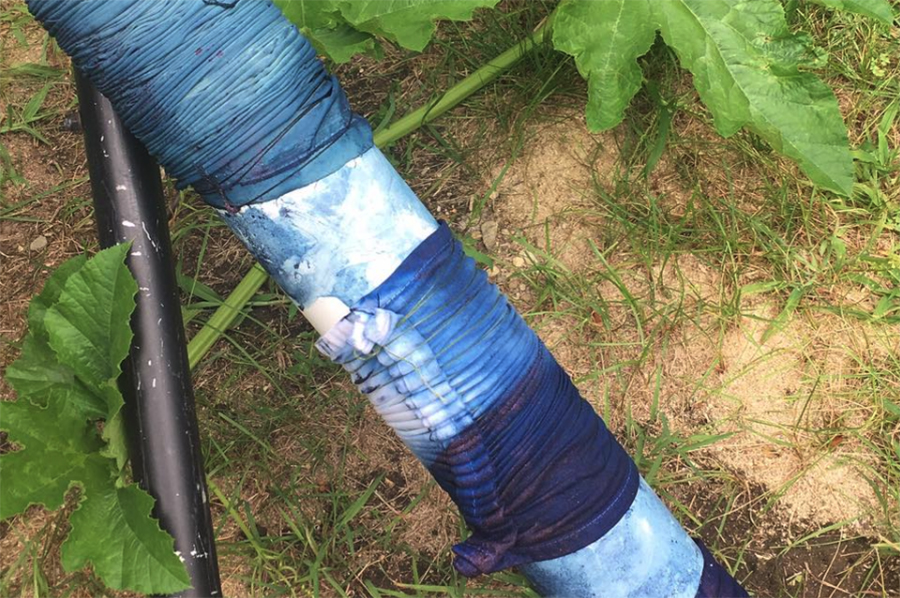
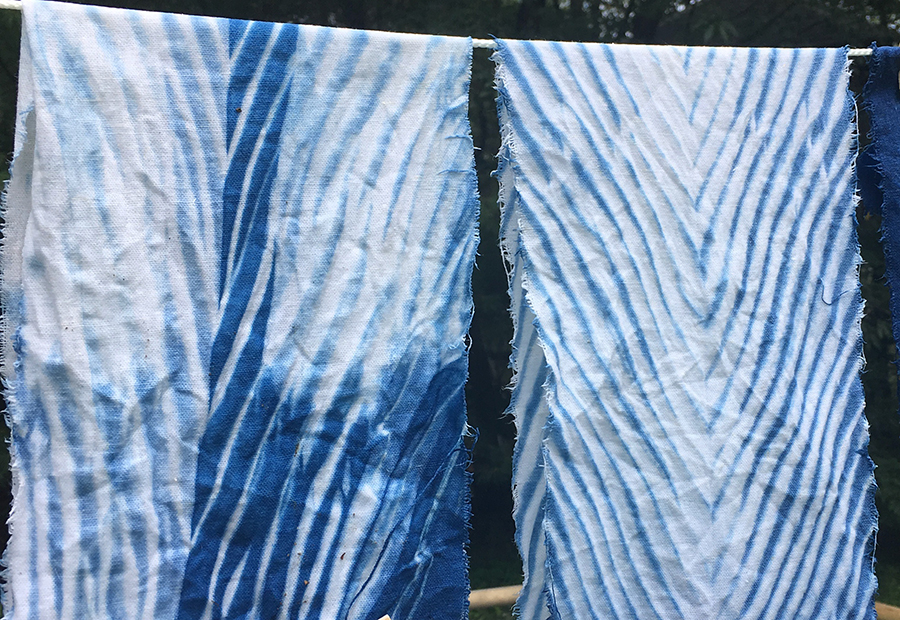
All of these different techniques produce beautiful results on their own but can also be combined to make even more layered effects. The world of shibori is full of unending experiments and methods. Changing just one element can change an entire outcome and leads to insatiable experimenting. And these four techniques are not even the only means of resist dyeing. Ikat binds threads before weaving, batik uses wax to paint a design onto a flat cloth, and so many more! Resist dyeing is a wonderfully creative rabbit hole to fall down!
Sources: Shibori, The Inventive Art of Japanese Shaped Resist Dyeing by Yoshiko Iwamoto Wade, Mary Kellogg Rice, Jane Barton
Photo credit: Cathy Wilkerson of The Indigo Squirrel
Like this post? Pin it for later so it’s easy to find! And while you’re on Pinterest, give us a follow.
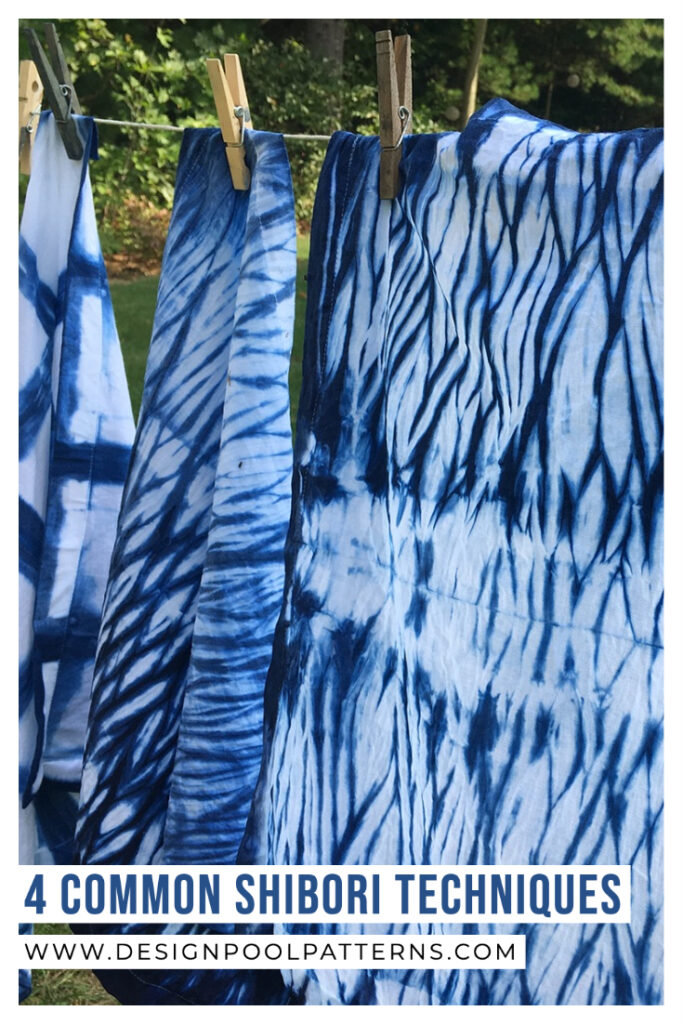
Share this post
Author
DESIGN/COLOR TRENDS AND AWESOME INFORMATION IN YOUR INBOX
Sign up for our monthly trend letter







